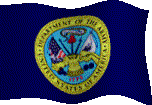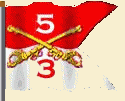Charlie Horse History Forward
5 June 1971
Hickory, an Observation/Radio Relay Station perched on a shark-tooth shaped pinnacle north of the old Khe Sanh base fell to a ground assault. Hickory, also known locally as “Tel-Star,” had seemed to be an impregnable site. With the vastly increased NVA activity on the Khe Sanh Plateau and on the abandoned road system, the NVA were demonstrating their resolve to control the western AO, especially with the weather limiting access. The weather also enabled the installation of many new anti-aircraft positions. 23mm and 37mm sites were becoming numerous along with a proliferation of 51 Cals. The weather, during the NVA assault, had been terrible with the mountain blanked in clouds. At first light the following day, weather cleared enough to get an augmented team to the area. CPT Bill Allen and his CE, George Branigan, in a Scout made a hazardous approach and landing onto the now deserted mountaintop pad. They saw no survivors. From his left seat, Branigan observed, “it was all burned black.” There was some relief when later in that day the Troop was informed that a portion of the friendly forces, both ARVN and American had escaped down the mountain, evading the enemy in the chaos and fog. They managed to escape and evade to Camp Carroll. A miracle in itself that they were able to escape capture or death.
Personal Recollections of CPT Tom Ford:
I had made several landings on Hickory taking in or retrieving one or two personnel at a time. The approach was always from the west to east toward a sheer cliff face, and the landing was to the top of a reinforced bunker with radio antennas in abundance. I was sure that the reason that the site had remained relatively unmolested prior to the evacuation of Khe Sanh at the end of the LS 719 was because it was perceived by the NVA as impregnable. I have no idea what the assault cost the NVA, but it was another demonstration of just what they would do and were capable of, if they truly wanted to have and hold a position. I believe an American SGM was captured in that assault, became a POW and was released at the end of the conflict.
13 June 1971
The Troop lost another qualified Scout CE and his OH-58 #68-16786 at grid YD043628. This would be the final OH-58 KIA for Charlie Horse. Assigned a mission to perform visual recon in advance of American ground elements and search for 122mm rocket sites, a Hunter Killer team with newly minted Scout WO William Halevy discovered a pit with exposed rockets. While attempting to mark the pit with smoke grenades, the LOH came under small arms fire, grievously wounding SGT Gary Westphal. Retreating behind Cobra covering fire, WO Halevy headed his damaged LOH in a direct line for the 18th Surg leaking fuel and blood all the way. He was fortunate to get the LOH to the pad at the 18th Surg with the battle damage it had suffered.
The second Charlie Horse Team airborne at the time was diverted to exploit the discovery.
The Scout with the responding team was another recently qualified Scout and Aircraft Commander, LT Thomas Bell.
With the NVA now realizing they were “discovered” and the 122mm rockets were going to be destroyed, they were attempting to exit the immediate with a fighting withdrawal. The LOH piloted by LT Bell entered the vicinity to mark the pits for destruction by artillery fire using smoke grenades as markers. Ground fire met his attempt to mark, and the box of assorted grenades in the rear compartment with the Crew Chief was hit and ignited several smoke grenades. The small arms fire was intense, impacting the LOH and also causing a partial engine failure. The resulting smoke filled the LOH and Bell was fortunate to be able to execute a hard landing. Exiting the LOH , both the Observer and LT Bell cleared the smoke before LT Bell realized his Crew Chief was still in the aircraft which was starting to burn. Bell disappeared back into the smoke and flames, only to reappear with his Crew Chief in a “fireman’s carry” and from a dead run, jumped into a water filled bomb crater to escape the small arms fire from multiple positions close to the burning LOH. The struggle then became just keeping both their heads above water with the CC having suffered both legs broken in the forced landing. The crew recovery was completed by the UH-1 chase aircraft after the nearby NVA were neutralized by the COBRA Guns.
Later that afternoon and evening, members of the Troop traveled over and donated blood in the hospital’s fight to save SGT Westphal. I’ve been told that over 60 units of blood were used in that attempt, but to no avail.
16 June 1971
FSB Fuller was overrun by NVA. As the most western of the FSBs and on the top of a mountain, Fuller seemed to be the epitome of an unassailable position. The NVA were undeterred by all the airpower, artillery and gunship support brought to bear. Attending an Operational briefing at the 1/5th, a Hac Bo (ARVN Rangers) unit was tasked to retake the peak. The Commander was very enthusiastic at the prospect of close combat. He requested that the Charlie Horse Huey insert his fighters on the top of the FSB. A more modest position on a nearby saddle was selected and the insert made on the second day after the NVA had captured the position. They found that the NVA had raised their flag and deserted the FSB. This very vivid demonstration of will power and resolve by the NVA was not lost on the ARVN Commanders.

.gif)


